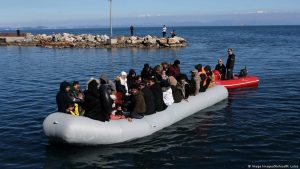In yet another unfortunate incident that has befallen refugees,
at least 12 people were killed and another ten were missing when four
boats carrying 120 African migrants and refugees sank off the coast of Tunisia on
Saturday, as they attempted to cross the Mediterranean to Italy, according to Reuters.
98 individuals were rescued off the coast of Sfax, according
to Ali Aayari, a lieutenant colonel of the Tunisian Coast Guard. For people
in search of a better life in Europe away from the crises in Africa and the Middle East, the Sfax coastline has become a
significant departure point. Last year, the interior ministry stated it
arrested more than 20,000 migrants and refugees off its coast.
Also read: Russia-Ukraine crisis: War refugees top 5 million, 13 million still trapped
With the rising number of attempted crossings to
Italy from Tunisia and Libya in recent months, hundreds of migrants have
drowned off the Tunisian coast. In fact, in recent years, hundreds of
thousands of people have undertaken the deadly Mediterranean crossing in order
to flee the conflict, human rights violations, persecution and poverty in their
countries.
According to the United Nations High Commissioner for
Refugees (UNHCR), more than 123,000 refugees and migrants came in Italy in
2021, up from more than 95,000 in 2020. Since 2014, more than 18,000 migrants
and refugees have perished or disappeared while attempting to make the journey,
according to the International Organization for Migration.
Also read: Sightseeing boat carrying 26, missing in Japan after reports of sinking
Tunisia, a country in North Africa’s Maghreb region, has
committed to the fundamental refugee conventions and protocols. Its 2014
constitution safeguards the right to seek political asylum in the
country and adheres to the non-refoulement principle. As a result, it is a
widely preferred destination/transit route for refugees from North and
Sub-Saharan Africa, as well as Syria and Yemen. Furthermore, Tunisia has
recently grown in prominence amongst migrants compelled to seek alternative
routes to European coastlines due to the continent’s constraints on inward
normal migration. The increasing influx of refugees is also a result of a rise in
the departure of sub-Saharan Africans and Tunisians, from the country to Europe.






